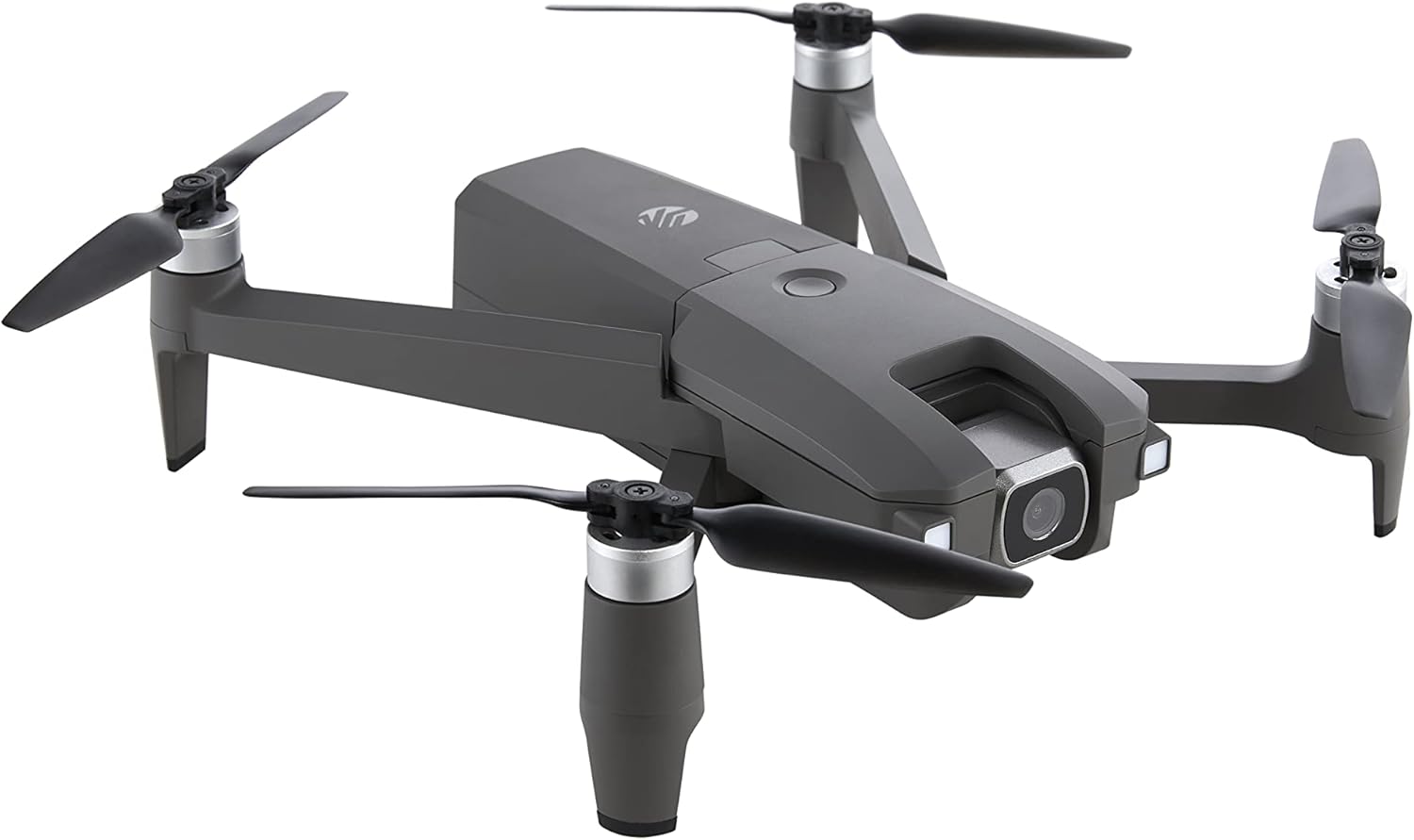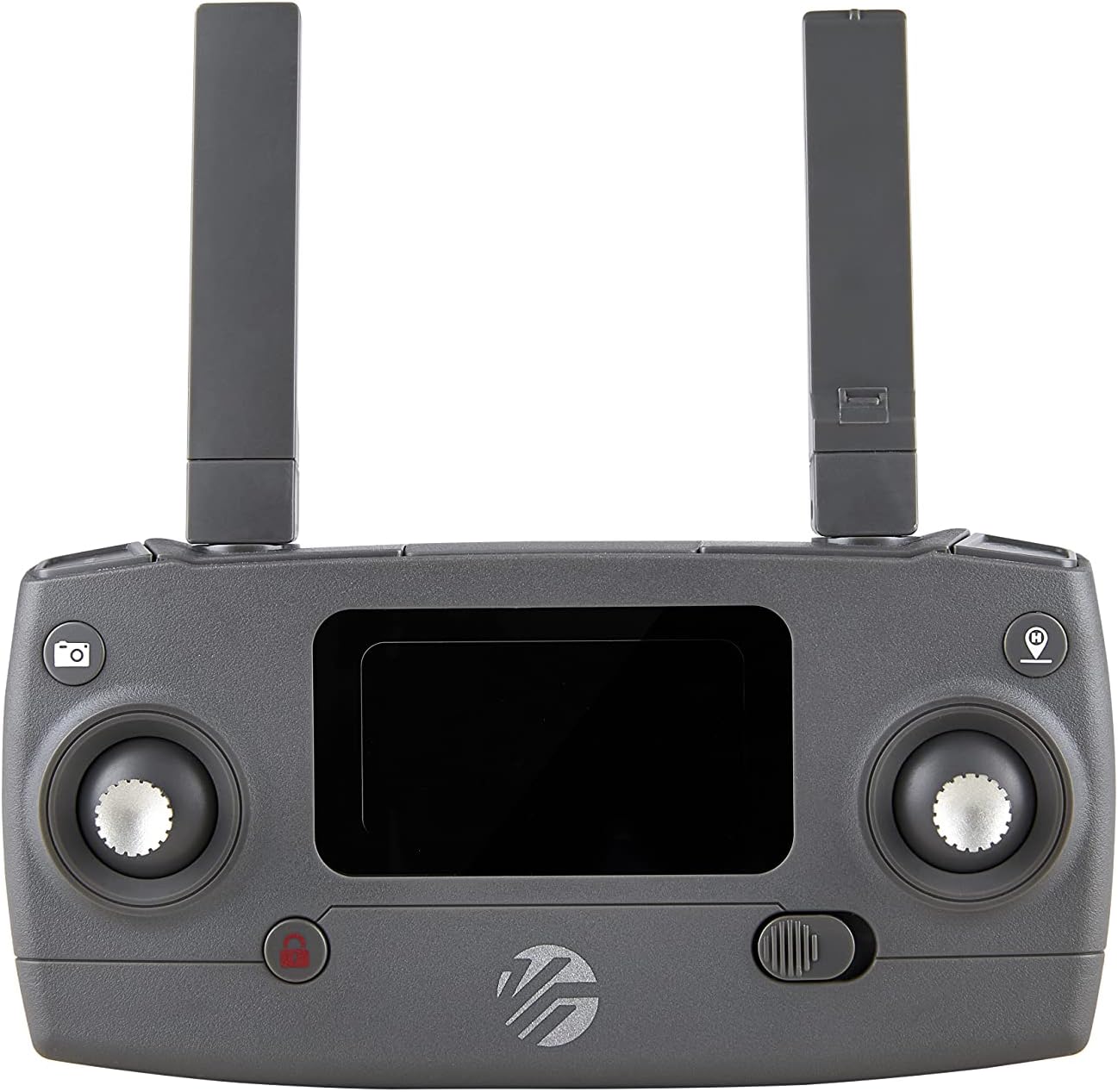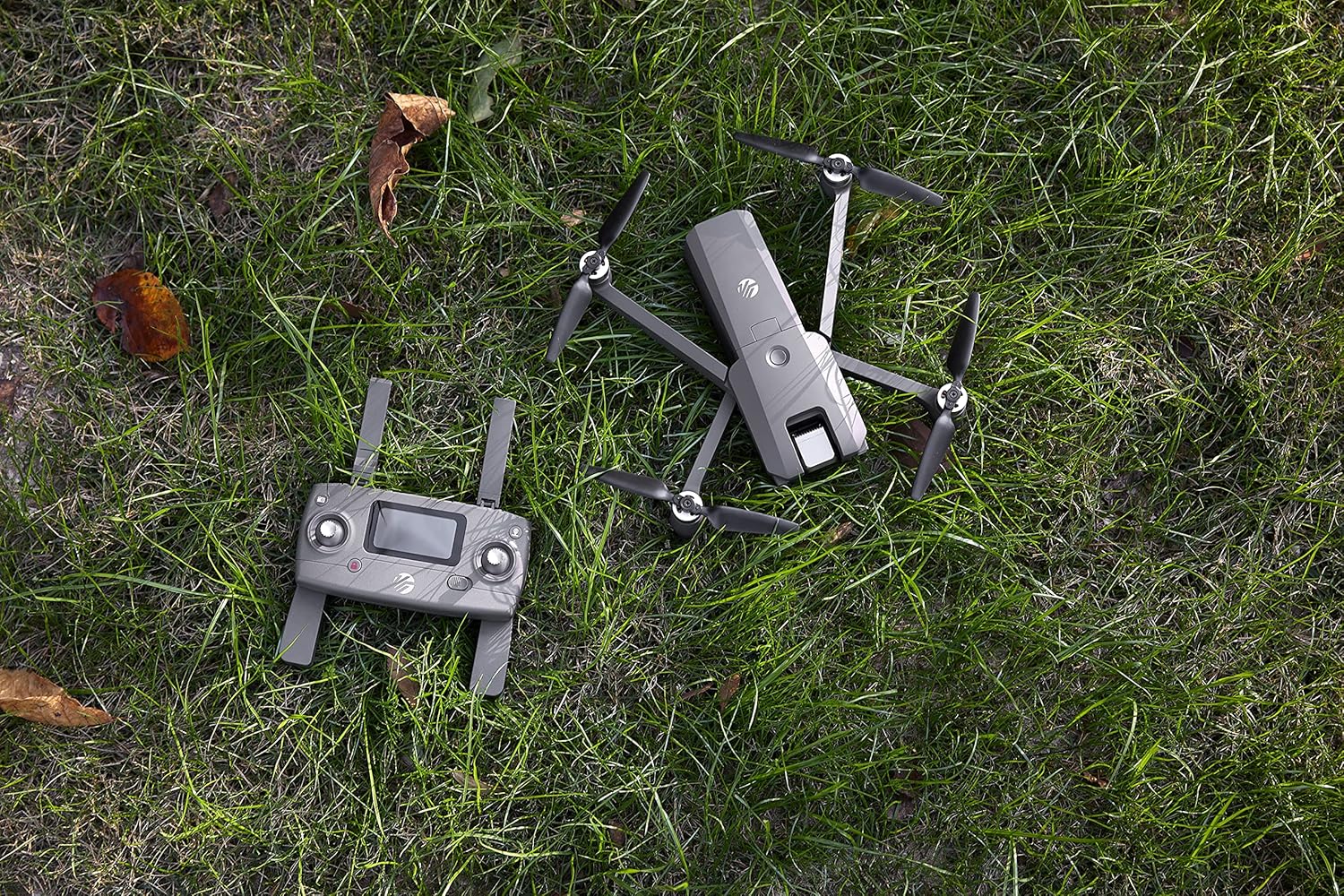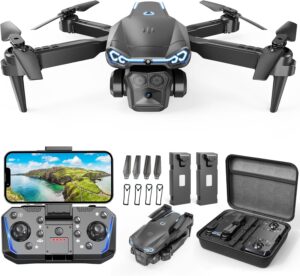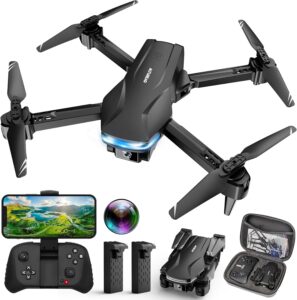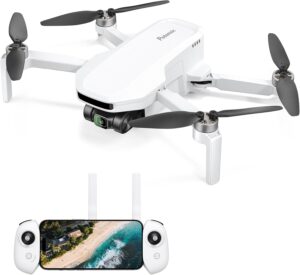Is there anything more humbling than learning to pilot a drone and discovering the family dog is judging our aeronautical prowess from the lawn?
Why We Chose the Vivitar Phoenix for Our Aerial Adventures
We wanted a camera drone that didn’t require us to remortgage the house or earn a pilot’s license, yet still gave us the thrill of seeing our neighborhood from a bird’s-eye view. The Vivitar Phoenix Long Flight Time Drone for Adults promised a sweet spot: an HD rotating camera, a brushless motor for stability, GPS and WiFi features, and a flight time long enough to make our neighbors nervous in a friendly, “please don’t crash into my azaleas” kind of way. After several weeks of flights, we’ve gathered our impressions—warts, wings, wins, and all.
The Short of It Before We Go Long
We’ll say it up front: this is a capable, user-friendly camera quadcopter that feels designed for adults who want to capture decent aerial footage without fiddling with advanced flight settings. The rotating HD camera is surprisingly useful, the brushless motors deliver calm and confident flight, and the GPS features like Follow Me and return assistance add a reassuring security blanket. It’s not the drone for cinematic filmmakers or speed racers, but for most of us—casual videographers, content creators, weekend travelers—it hits a satisfying middle.
Vivitar Phoenix Long Flight Time Drone for Adults, HD Action Camera Quadcopter with Brushless Motor and Wide Range, Foldable WiFi GPS with 3 Speeds, Follow Me, 32 Minutes Flight
Unboxing and First Impressions
We opened the carry bag like it was a lunchbox with a secret compartment. Inside, the foldable drone sat neatly beside the controller, spare propellers, charging cable, and the instructions that we pretended not to need until we clearly needed them. The drone folds down into a portable, packable form—about the size of a thick book—so carrying it to the park doesn’t inspire a logistical meltdown.
The materials feel sturdy. The arms lock into place with a satisfying certainty, and the brushless motors give off that slightly futuristic hum we associate with good choices. We’ve had drones that felt like they were made from recycled salad containers; the Phoenix doesn’t give that vibe.
Setup Is Not a Puzzle, It’s a Process
Our first setup went something like this: download the app, connect via WiFi, calibrate the compass and gyroscope, and then perform a brief ritual of reading the instructions twice because, somehow, the calibration dance always feels like it should be done facing the moon. It paired faster than expected, and the app offered a clear live feed from the HD camera. Small victories. We’ll take them.
Camera Capabilities: The Rotating HD Eye in the Sky
Let’s talk about the camera like we’re gossiping about a beloved neighbor: not a flashy movie star, but solid, reliable, and surprisingly versatile. The Vivitar Phoenix uses an HD camera mounted on a motorized system that rotates up to 180 degrees. That rotation is the real treat here. We can tilt from horizon to straight-down shots mid-flight without landing, which changes what we shoot and how we think about movement.
In our tests, we captured everyday landscapes—tree-lined streets, lake edges, children’s soccer games—from practical viewpoints. The footage looks clear enough to share without apology, and the stills are perfectly usable for social media or family albums. The camera’s HD quality isn’t cinematic; it’s everyday-life friendly. If we were chasing ultra-crisp, high dynamic range shots at sunset, we’d probably look elsewhere. But for consistent, reliable footage of actual life, this works.
Why the 180-Degree Rotation Matters
It’s not just a gimmick. Being able to pivot the camera while hovering lets us compose shots without flying forward or backward into obstacles (hi there, tree). For tracking action, especially at a park or on a trail, we could smoothly shift from an establishing forward view to a top-down scene in one flight path. That rotate-on-command feel gives this drone a more professional rhythm than we expected at this price.
Stabilization in Real Time
We didn’t expect a cinematic gimbal, and we don’t get one. But the brushless motors and the drone’s overall stability help the footage stay smoother than it has any right to be on a windy afternoon. While we avoided jittery, seasick footage in most conditions, we did notice the occasional wobble in gusts. If the goal is perfectly buttery footage, the Phoenix will do well in mild weather and thoughtful piloting, but windy days still demand finesse.
GPS, WiFi, and App: The Triangle of Modern Drone Sanity
Three technical elements hold this drone’s experience together: GPS assistance, WiFi live view, and app control. When they behave, we relax. When they falter, we suddenly question our life choices.
The good news is that they mostly behave. The GPS lock gives the drone steady hover and location lock. Follow Me works: we walked around our block like local celebrities being tailed by a polite paparazzi, and the drone kept up. The WiFi feed was crisp enough to frame shots well within range, and the app made adjusting camera angle and flight modes intuitive.
Headless Mode and Return Assistance
Headless mode is great for those of us who haven’t yet developed full spatial wizardry. In this mode, pushing forward sends the drone forward relative to our position—not its nose. It won’t turn us into an ace pilot, but it mitigates panic when we lose track of orientation. Combined with GPS-assisted return features, we felt comfortable pushing out further than we would with a basic RC quad.
Range and Connection Stability
The Phoenix boasts a connection up to about 3500 meters under ideal conditions. In our real-world suburban test site, with trees and WiFi signals and the occasional suspicious pigeon, we got a strong range well beyond comfortable line-of-sight. The signal held steady for the kinds of flights we actually do—park circuits, shoreline sweeps, backyard cinematography, and mock-movie establishing shots that made us feel important.
The Joy of Three Speeds: Slow, Medium, Fast
We don’t always want to fly at the same pace, just like we don’t always want to jog at the same speed when leaving a bakery. The Phoenix gives us Slow, Medium, and Fast modes, which we found genuinely useful.
- Slow: Perfect for careful framing and indoor-style caution (though we kept it outdoors). This is the “don’t hit the maple tree” setting.
- Medium: The everyday speed. Balanced for learning, filming, and general flying.
- Fast: The fun one. It’s not race-drone fast, but it’s spirited enough to make our hands sweat, in a good way.
Switching between speeds mid-flight helps when we’re shooting. Start slow for a reveal, bump to medium to reposition, and kick into fast for a sweeping pass. The motor’s response feels crisp, and the drone doesn’t lurch as if surprised by our sudden enthusiasm.
Flight Time: The “We Didn’t Expect It to Last This Long” Battery
The headline number is up to 32 minutes of flight time under ideal conditions. In our flights, we usually clocked somewhere between 24 and 30 minutes depending on wind, speeds, and how many “just one more shot” turns we made. That’s better than many beginner-friendly drones we’ve tried and genuinely changes the experience. With 10 minutes of flight time, we stress. With 30, we relax and think creatively.
Charging takes about 4–5 hours via the included USB adapter. Is that fast? Not really. Is it manageable? Absolutely. We charged it in the car on the way to a family picnic and felt like logistical masterminds. If you plan longer outings, consider a second battery to stretch the fun without waiting.
Portability and Build: The Foldable Friend
We loved the foldable frame. It makes the drone feel like a grown-up piece of gear we can actually travel with. The included carry bag is a good touch; it nudges us out the door with everything in one place like a well-behaved lunch set. The arms lock securely, the props are easy to replace, and the casing doesn’t feel flimsy.
We don’t toss it around or test it against concrete because we aren’t masochists, but it handled a casual bump into soft foliage with no drama. If you’re brand-new to drones, we recommend practicing in a big, open, obstacle-free field for your first flights. Your nerves and your trees will thank you.
Real-World Use Cases: What We Actually Shot
We took the Vivitar Phoenix to places that demanded different kinds of footage and patience.
- The park loops: smooth horizon shots, gentle pans along treelines, tracking joggers with Follow Me.
- The lake morning: slow, confident forward movement over water is a universal crowd pleaser. The HD footage made it look tranquil even when we were chewing our nails.
- The backyard birthday: top-down shots of a cake-cutting ceremony, which, for reasons unknown, made it feel cinematic. The rotating camera was gold for this.
- Trail walks: using Follow Me to get footage of our hiking group from a respectful distance. We appreciated that it kept pace without pirouetting out of frame.
In every case, the Phoenix made it easy to get video that we were eager to share. It didn’t turn us into film directors, but it gave us a toolkit we could wield without a manual in our other hand.
The Feature Breakdown at a Glance
We like a simple reference when we’re out flying and need a reminder of which setting does what. Here’s a quick summary of the key features, what they do for us, and how they felt in the field.
| Feature | What It Is | Why We Liked It | Notes From Our Flights |
|---|---|---|---|
| HD Rotating Camera (up to 180°) | Motorized tilt from forward to straight down | Framing flexibility without landing | Smooth transitions; best results in mild wind |
| Brushless Motor | Efficient, durable motor type | Stable flight, less noise | Feels confident in breezy conditions |
| 3 Speed Modes | Slow, Medium, Fast flight settings | Control for learning and filming | We used Medium most; Fast is fun for sweeping shots |
| GPS Positioning | Satellite-guided hover and location lock | Holds position, reduces drift anxiety | Takes a moment to lock; wait for strong GPS before takeoff |
| Follow Me | Drone tracks our movement | Great for hikes and jogs | Works best in open areas |
| Headless Mode | Orientation simplified relative to us | Easier control when we lose bearing | Helpful for beginners; we used it less over time |
| WiFi Live Feed | Real-time camera view in app | Composing shots is simple | Keep under recommended range for clean video |
| Return Assistance | Helps the drone come back | Peace of mind for longer flights | Always check home point is set |
| Flight Time (up to 32 minutes) | Long battery life | Fewer interruptions; more creativity | Our average: 24–30 minutes |
| Range (up to ~3500 m) | Strong connection capability | Confident control in normal use | Real-world range varies with environment |
| Foldable + Carry Bag | Portable design | Easy to travel with | Packs neatly; good for casual trips |
| USB Charging (4–5 hrs) | Charging via adapter | Convenient and universal | Not the fastest; consider a spare battery |
Learning Curve: We Didn’t Need a Tutor
We started cautiously, noses scrunched, thumbs stiff. By the second flight, we felt in control. The flight controls in the app are straightforward, and the physical controller (if included in your bundle) is intuitive. The Phoenix is forgiving—especially in Slow speed mode—so muscle memory builds quickly.
A few tips we learned the charming way:
- Wait for a solid GPS lock before takeoff. It’s the difference between a relaxed hover and a slow crab-walk across the sky.
- Practice rotating the camera while hovering. It’s easy to get carried away mid-flight and tilt too fast.
- Use Slow mode for lower-altitude passes and tighter spaces, Medium for most filming, and Fast only when you’re well clear of obstacles.
Stability: Calm Is the Secret Sauce
We judge drones by how they hover. This one hovers like it takes the job personally. The GPS and altitude hold keep it steady enough for photos and calm video. We found we could get nice, clean, top-down shots without fighting drift. On gusty days, we could feel micro-corrections in the controls, but the drone did its part to keep the footage usable.
The App: A Necessary Companion That Behaved
We often have an adversarial relationship with drone apps. This one kept the peace. The live video feed loaded quickly, the record button responded without hesitation, and the telemetry (altitude, distance, battery) was easy to read. We could adjust settings mid-flight without sifting through obscure menus. There’s still the occasional “reconnect WiFi” nudge, especially if we walked around with our phone in our pocket like a distracted stage manager, but reconnects were fast.
Audio? No, the Drone Does Not Narrate
We know this, you know this, but occasionally someone asks: drones don’t record sound from the air in a way you’d ever want to hear. The rotor buzz would drown out a parade. If you plan to use the footage for content, we recommend pairing it with music, voiceover, or ambient sound recorded on the ground. Our favorite pairing was gentle acoustic music under sunrise shots, because we’re sentimental like that.
Night Flights and Low Light
This is not a night-vision device, and we treated it accordingly. In low light, the footage is serviceable if we’re aiming for mood, but details soften. We maintained visual line of sight and flew in safe, open areas when the sun was getting shy. For truly cinematic night work, you’d want higher-end optics. For most casual evening flights, we got pleasing, if not razor-sharp, results.
Safety, Return Assistance, and Anxiety Management
A good drone gives us fun without palpitations. The Phoenix’s return features help. We always confirm the home point is set before taking off. When the battery dips low or if we wander too far and lose our nerve, we can prompt it to come back. In practice, it returned calmly and landed close to the takeoff point. We had one landing that overshot by a couple of meters on a breezy day, which felt perfectly reasonable to us. We recommend a clear landing pad area: grass, flat dirt, or a portable drone pad if you want to feel official.
Who This Drone Is For
We’ve tried to decide which version of ourselves this drone suits best:
- Learners and casual flyers who want steady footage without fiddly settings.
- Travelers who value a foldable design and a longer flight time.
- Fitness folks who like the idea of Follow Me for trails and park circuits.
- Event people who want dynamic overhead shots at family gatherings, small outdoor events, or neighborhood activities.
- Content creators who need solid HD footage and simple operation.
Who might want something else?
- Filmmakers who need pro-level stabilization and higher resolution images with flat profiles.
- Racing enthusiasts who want high-speed agility and customizable FPV rigs.
If you’re in the first group, you’ll feel right at home. If you’re in the second, you’ll appreciate the Phoenix as a leisure drone but may want a specialist model for your main work.
The Good, the Gaps, and the “We Learned to Live With It”
What We Loved
- The 180-degree rotating HD camera is more useful than we expected.
- Brushless motors give the drone a calm, steady demeanor in the sky.
- GPS-assisted features make flying more confident and stress-light.
- Up to 32 minutes of flight time allows for leisurely, creative sessions.
- Foldable build and carry bag invite spontaneous outings.
What We Missed
- HD quality is good, not cinematic; serious filmmakers may want more.
- Charging at 4–5 hours feels long if we’re eager and impatient.
- No mention of advanced obstacle avoidance, so the pilot must stay alert.
- WiFi video range is good, but we treat it as a framing tool, not a long-range broadcast system.
What We Accepted
- On windy days, we plan our shots to account for bumps.
- We wait for solid GPS lock before liftoff, even when the dog is impatient.
Practical Tips to Get the Most Out of It
- Start your session with a battery above 90% and your phone charged. Obvious, yes, but it’s amazing how often we forget.
- Calibrate on a flat, open space. Rotate as directed. Don’t rush it.
- Map your shot list. Even just a mental list: establishing pass, top-down, Follow Me segment, closing pass. It helps us use the long flight time well.
- Keep a microfiber cloth for the lens. Dust never announces itself before a great sunset.
- Favor mornings and late afternoons for softer light. The HD camera looks friendlier to faces and landscapes when the sun is kind.
- Practice panning slowly with the camera tilt rather than flying backward. It produces smoother sequences.
Situations We Didn’t Expect to Love (But Did)
- Top-down grid shots of a picnic blanket. We’re not sure why this is satisfying, but it is.
- Low, slow passes over garden beds. The footage looks like a nature documentary, albeit one with tomatoes.
- Simple mapping of hiking paths. Looking back at the footage gave us a clear sense of the route, turns, and trail forks.
How It Compares in Spirit
Without calling out specific models, here’s the vibe. Some drones focus on ultra-high-resolution cameras and stabilization, with prices to match. Others focus on beginner-friendly operation with basic cameras and short flight times. The Vivitar Phoenix threads between those camps, giving us:
- A better-than-basic camera with genuine utility thanks to rotation.
- A flight time that makes the whole experience feel generous.
- GPS features that belong on pricier models, executed well enough for everyday confidence.
If we were comparing buckets, we’d place it squarely in the “confident casual” category: good enough to make us proud of our footage and durable enough for repeated use.
Weather, Wind, and Seasonal Quirks
We flew in mild wind, a breezy afternoon, and a cooler day near the water. The results were consistent: stable in light wind, nudge-prone in stronger gusts. Cold weather affected battery performance slightly—an expected quirk with most Li-ion packs—so we planned shorter sessions and warmed the battery in our pocket before flight. In heat, we gave the motors rest time between flights. The drone never complained; we just tried to be considerate.
Battery Care and Longevity
If we want the most from the 32-minute potential:
- Avoid full discharges; we land at around 20–25%.
- Keep the battery out of extreme temperatures.
- Store partially charged if we won’t fly for a while.
- Use the official charging method and allow the pack to cool before recharging.
These habits paid off with consistent performance across our test period.
People, Pets, and Politeness
A quick word on etiquette. We kept a respectful distance from people who weren’t part of our group, asked before flying near family, and didn’t hover over dogs. The Phoenix is quieter than some, thanks to brushless motors, but still audible. We’ve found that a simple wave and explanation—“We’re just filming our picnic”—softens suspicious glances.
Common Questions We Asked Ourselves (Then Answered)
Can we trust the Follow Me function?
Yes, within reasonable expectations. It kept up with us on open paths and light jogs without drifting off like a curious toddler. We didn’t use it in crowded or obstacle-heavy areas.
Is the HD footage good enough for social media?
Absolutely. It looks crisp, and the rotating camera helps get angles that feel intentional. With a gentle color tweak in editing, it pops nicely.
Does it handle returns well?
Yes. We triggered return assistance a handful of times and watched it come home like it remembered where it parked. We always confirm the home point and maintain line of sight.
What’s the biggest advantage of the 3-speed setup?
Confidence and compositional control. Slow for precision, Medium for filming, Fast for flair. It gives us a rhythm in the air.
Any regrets?
We wish charging were faster. That’s really it. Within its lane, the Phoenix performs like a dependable friend.
Our Favorite Use-Case: The Day Trip Filmmaker
The Phoenix shines when we toss it in the car on the way to lunch by the water or a weekend trail. Thirty minutes of flight time turns into a handful of short sequences we can cut into something coherent: an establishing shot, some pans, people moving naturally, a top-down montage. The footage tells a story of the day, and we’re left with a memory reel that doesn’t require hours of stabilization wizardry.
Accessories and Add-Ons That Helped
- A landing pad: keeps dust off the lens and props out of grass.
- A spare battery: transforms a good session into a great one.
- A basic ND filter set (if compatible): helps in bright midday light.
- A phone sun hood: visible screens make better pilots.
None of these are essential, but they made our flights smoother and our footage prettier.
A Few Words on Maintenance
We aren’t the type to polish our drones like classic cars, but we do:
- Check props before flights.
- Wipe the camera lens.
- Keep firmware up to date if the app prompts it.
- Store the drone in its carry bag so it doesn’t accumulate mystery lint.
It’s the kind of routine that gives us a long, low-drama life with our gear.
The Emotional Arc of a Flight
There’s a predictable little story each time we fly the Phoenix:
- The Warm-Up: Launch, check hover, test tilt on the camera.
- The Discovery: Realize the shot we wanted is possible in fewer moves than expected.
- The Flourish: One or two “let’s try this” passes in Fast mode.
- The Practical: Return with battery to spare, land gracefully, feel smug.
- The Review: Watch the footage and realize that adding a simple soundtrack makes everything look twice as intentional as we felt in the moment.
We’ve come to rely on that arc. It makes flying feel like a creative act rather than just a technical exercise.
The Bottom Line on Value
The Vivitar Phoenix Long Flight Time Drone for Adults delivers a compelling package: HD camera with motorized rotation, brushless motor stability, GPS/Follow Me functionality, user-friendly controls, and a genuinely generous flight time. It’s priced for adults who take their hobbies seriously but aren’t trying to win a film festival. What it gives us—confidence, flexibility, and enough time in the air to create something we’re excited to share—feels well worth the cost.
Final Verdict: A Friendly, Capable Partner in the Air
We measure drones not just by their specs but by the way they make us feel when we’re flying them. The Vivitar Phoenix feels like a thoughtful companion: keen to help, calm under pressure, and happy to take another lap if we spot a better angle. The HD camera’s 180-degree rotation is the star of the show, the GPS features are the steady stagehands keeping everything in place, and the brushless motors are the quiet workers that make us look more skilled than we are.
Is it perfect? No. We want faster charging and, in a dream world, cinematic stabilization. But for the price and the purpose, it’s exactly the kind of drone we end up recommending to friends who ask, “Which one should we get for our trip?” It’s the one we’d hand them without a second thought, along with a gentle reminder to wait for GPS lock and to be kind to the trees.
In the grand ledger of our hobby purchases, the Phoenix earns a solid, satisfied check. We set out to find something we’d actually use, not just admire on a shelf. We found it. And now we have footage of our lives from 200 feet up, which somehow makes ordinary afternoons feel like scenes from a story we’re happy to keep writing—one battery charge at a time.
Disclosure: As an Amazon Associate, I earn from qualifying purchases.
